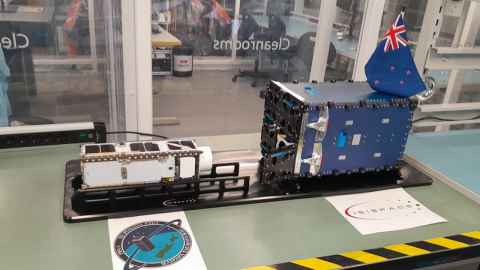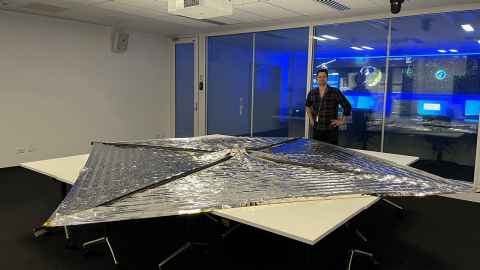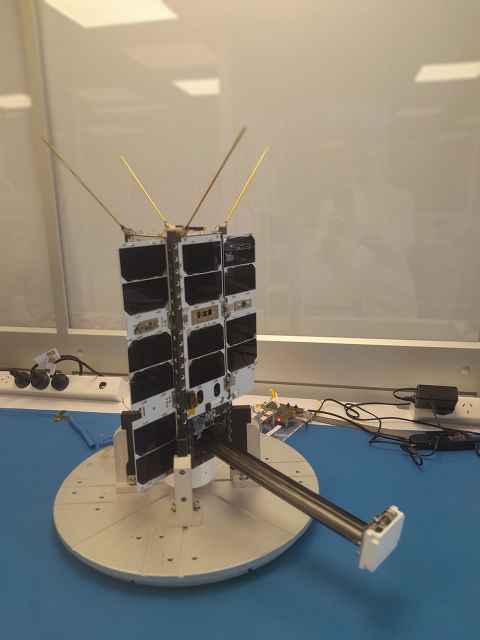Space Institute satellite successfully launched
30 June 2025
A loaf-sized satellite built by university researchers has just made its first contact from orbit.

A small satellite developed by the University of Auckland's Space Institute has successfully launched into orbit, supporting research and capability building in New Zealand's growing space sector.
The satellite, TPA-1, was deployed on 23 June, 2025 (local time) aboard the Transporter-14 rideshare mission from Vandenberg Space Force Base in California. Developed and integrated by staff and students at Te Pūnaha Ātea, the Space Institute, the CubeSat is now in a 505 by 525km sun-synchronous orbit.
Dr Ben Taylor, a Senior Research Fellow at the Space Institute, is leading the mission.

"Early indications are the spacecraft is in good health with power, temperature and attitude rates all within acceptable bounds," says Taylor.
"It has been great to receive those first signals from the spacecraft and confirm the satellite is operating after watching the deployment streamed live. Having developed, integrated, qualified and now operating the mission from Auckland, this is a significant step forward, not just for our team, but for the capability we're building in Aotearoa New Zealand."
Among the technologies on board is a New Zealand-designed drag sail, which will be deployed at the end of the mission. The drag sail is akin to a large kite, unfolding to increase atmospheric drag and gradually lowering the spacecraft's altitude until it burns up safely in the Earth's atmosphere.
"Something like this would operate for a couple of years but would stay in orbit for about five or six years," says Taylor.
"We've installed one of our drag sail systems on board to bring that spacecraft down at the end of the mission, so we're not contributing to the space debris issue."

Despite its miniature size, the satellite contains a full suite of spacecraft systems.
"We actually get most of the same systems you'd have on a much bigger spacecraft into TPA-1, which is about the size of a loaf of bread," says Taylor.
"Despite its size, there's plenty of power generation and capability on board to allow us to do these kinds of missions at the scale we can support within a university."
The payload includes Earth observation cameras that will serve as a test bed for image processing, a deployable and retractable boom - a sort of selfie-stick - for inspecting the spacecraft's external surfaces in orbit, and a thermal monitoring system designed for extended temperature coverage.

Taylor says one of the most exciting aspects of the mission is the opportunity it gives students to engage directly with space systems and operations.
From the ground, they'll be able to write and upload software, monitor the satellite's performance, and carry out real-time experiments.
"We're just really excited to see what the students come up with," says Taylor.
Media contact
Jogai Bhatt | Media adviser
M: 027 285 9464
E: jogai.bhatt@auckland.ac.nz